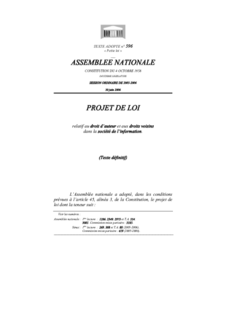 W
WiTunes is a media player, media library, Internet radio broadcaster, mobile device management utility, and the client app for the iTunes Store, developed by Apple Inc. It is used to purchase, play, download, and organize digital multimedia, on personal computers running the macOS and Windows operating systems, and can be used to rip songs from CDs, as well as play content with the use of dynamic, smart playlists. Options for sound optimizations exist, as well as ways to wirelessly share the iTunes library.
 W
WThe iTunes Store is a software-based online digital media store operated by Apple Inc. that opened on April 28, 2003, as a result of Steve Jobs' push to open a digital marketplace for music. As of April 2020, iTunes offers 60 million songs, 2.2 million apps, 25,000 TV shows, and 65,000 films. When it opened, it was the only legal digital catalog of music to offer songs from all five major record labels. As of June 2013, the iTunes Store possessed 575 million active user accounts, and served over 315 million mobile devices.
 W
WThe iTunes media platform was first released by Apple in 2001 as a simple music player for Mac computers. Over time, iTunes developed into a sophisticated multimedia content manager, hardware synchronization manager and e-commerce platform. iTunes was finally discontinued for new Mac computers in 2019, but is still available and supported for Macs running older operating systems and for Windows computers.
 W
WAirPlay is a proprietary wireless communication protocol stack/suite developed by Apple Inc. that allows streaming between devices of audio, video, device screens, and photos, together with related metadata. Originally implemented only in Apple's software and devices, it was called AirTunes and used for audio only. Apple has since licensed the AirPlay protocol stack as a third-party software component technology to manufacturers that build products compatible with Apple's devices.
 W
WAirPort is the name given to a series of products by Apple Inc. using the Wi-Fi protocols. These products comprise a number of wireless routers and wireless cards. The AirPort Extreme name was originally intended to signify the addition of the 802.11g protocol to these products.
 W
WAirPlay is a proprietary wireless communication protocol stack/suite developed by Apple Inc. that allows streaming between devices of audio, video, device screens, and photos, together with related metadata. Originally implemented only in Apple's software and devices, it was called AirTunes and used for audio only. Apple has since licensed the AirPlay protocol stack as a third-party software component technology to manufacturers that build products compatible with Apple's devices.
 W
WThe Apple Music Festival was a music concert series held by Apple, Inc. inaugurated in 2007. Free tickets were given to Apple Music, iTunes and DICE users who lived in the United Kingdom, through localized prize draws. Performances were streamed live and available to view afterwards, free of charge, for Apple Music members on their Apple TV, iPhone, iPad, iPod touch, Mac, PC, and Android phones. In London, the Apple Music Festival had become an annual music festival which takes place in September at The Roundhouse art centre in Camden Town. The series made its United States debut with five days of free performances at the Moody Theater in March 2014, alongside the South by Southwest (SXSW) music showcase in Austin, Texas.
 W
WApple Music: Up Next is a monthly program published by Apple Music aimed at identifying, showcasing and elevating rising star talent. Each month, Apple Music's editorial team selects an artist to promote in order to raise global awareness of the artist and further to grow the artist's audience. In August 2017, Apple Music premiered a monthly mini-documentary series chronicling the artists' journey, inspiration and influences. Each season of the Apple Music-exclusive ends with interviews and live performances called Up Next Sessions. Each selected artist will receive a performance slot on either The Late Late Show with James Corden, or Jimmy Kimmel Live!, in addition to an Apple Music-exclusive extended play of their Up Next live performances. Artists who have previously been given the title are Billie Eilish, Khalid, Jessie Reyez, Bad Bunny, Sigrid, Clairo, and Daniel Caesar.
 W
WApple TV is a digital media player and microconsole developed and sold by Apple Inc. It is a small network appliance and entertainment device that can receive digital data for visual and audio content such as music, video, video games, or the screen display of certain other devices, and play it on a connected television set or other video display.
 W
WDADVSI is the abbreviation of the French Loi sur le Droit d'Auteur et les Droits Voisins dans la Société de l'Information. It is a bill reforming French copyright law, mostly in order to implement the 2001 Information Society Directive, which in turn implements a 1996 WIPO treaty.
 W
WFront Row is a discontinued media center software application for Apple's Macintosh computers and Apple TV for navigating and viewing video, photos, podcasts, and music from a computer, optical disc, or the Internet through a 10-foot user interface. The software relies on iTunes and iPhoto and is controlled by an Apple Remote or the keyboard function keys. The first version was released October 2005, with two major revisions since. Front Row was removed and discontinued in Mac OS X 10.7.
 W
WiTunes is a media player, media library, Internet radio broadcaster, mobile device management utility, and the client app for the iTunes Store, developed by Apple Inc. It is used to purchase, play, download, and organize digital multimedia, on personal computers running the macOS and Windows operating systems, and can be used to rip songs from CDs, as well as play content with the use of dynamic, smart playlists. Options for sound optimizations exist, as well as ways to wirelessly share the iTunes library.
 W
WiLife is a discontinued software suite for macOS and iOS developed by Apple Inc. It consists of various programs for media creation, organization, editing and publishing. It comprised: iTunes, iMovie, iPhoto, iDVD, iWeb and GarageBand. Only iMovie and GarageBand remain and are now freely available on Apple's Mac App Store. iDVD and iWeb have been discontinued and iPhoto has been succeeded by Photos.
 W
WiTunes is a media player, media library, Internet radio broadcaster, mobile device management utility, and the client app for the iTunes Store, developed by Apple Inc. It is used to purchase, play, download, and organize digital multimedia, on personal computers running the macOS and Windows operating systems, and can be used to rip songs from CDs, as well as play content with the use of dynamic, smart playlists. Options for sound optimizations exist, as well as ways to wirelessly share the iTunes library.
 W
WThe iPhone is a line of smartphones designed and marketed by Apple Inc. that use Apple's iOS mobile operating system. The first-generation iPhone was announced by former Apple CEO Steve Jobs on January 9, 2007. Since then Apple has annually released new iPhone models and iOS updates. As of November 1, 2018, more than 2.2 billion iPhones had been sold.
 W
WThe iPod is a line of portable media players and multi-purpose mobile devices designed and marketed by Apple Inc. The first version was released on October 23, 2001, about 8+1⁄2 months after the Macintosh version of iTunes was released. As of May 28, 2019, only the iPod Touch remains in production.
 W
WThe iPod Classic is a discontinued portable media player created and formerly marketed by Apple Inc.
 W
WThe iPod Mini is a discontinued, smaller digital audio player that was designed and marketed by Apple Inc. While it was sold, it was the midrange model in Apple's iPod product line. It was announced on January 6, 2004, and released on February 20 of the same year. A second generation version was announced on February 23, 2005, and released immediately. While it was in production, it was one of the most popular electronic products on the market, with consumers often unable to find a retailer with the product in stock. The iPod Mini was discontinued on September 7, 2005 after 1 year of being made, and was replaced by the iPod Nano.
 W
WThe iPod Nano is a discontinued portable media player designed and formerly marketed by Apple Inc. The first generation model was introduced on September 7, 2005, as a replacement for the iPod Mini, using flash memory for storage. The iPod Nano went through several differing models, or generations, since its introduction. Apple discontinued the iPod Nano on July 27, 2017.
 W
WThe iPod Shuffle is a discontinued digital audio player designed and formerly marketed by Apple Inc. It was the smallest model in Apple's iPod family, and was the first iPod to use flash memory. The first model was announced at the Macworld Conference & Expo on January 11, 2005; the fourth- and final-generation models were introduced on September 1, 2010. The iPod Shuffle was discontinued by Apple on July 27, 2017.
 W
WThe iPod Touch is a line of iOS-based mobile devices designed and marketed by Apple Inc. with a touchscreen-controlled user interface. As with other iPod models, it can be used as a music player and a handheld gaming device, but it can also be used as a digital camera, a web browser and for messaging. It is similar in design to the iPhone, but it connects to the Internet only through Wi-Fi and does not use cellular network data, therefore it is not a smartphone. As of May 2013, 100 million iPod Touch units had been sold since 2007.
 W
WThe Apple iPod+HP was a line of HP-branded iPods, distributed through HP.
 W
WiSync is a software application first released by Apple Inc. on Jan 2, 2003. Apple licensed the core technology from fusionOne. It ran only under Mac OS X and was used to synchronize contact and calendar data from Address Book and iCal with many non-Apple SyncML-enabled mobile phones via a Bluetooth or USB connection. Support for many devices was built-in, with newer devices being supported via manufacturer and third-party iSync Plugins. Support for Palm OS organizers and compatible smartphones was removed with the release of iSync 3.1 and Mac OS X 10.6 Snow Leopard. BlackBerry OS, Palm OS, and Windows Mobile devices could not be used with iSync, but were supported by third-party applications. Before the release of Mac OS X 10.4, iSync also synchronized a user's Safari bookmarks with the then .Mac subscription service provided by Apple.
 W
WiTunes Radio was an Internet radio service by Apple Inc. that let users listen to automatically generated playlists based on direct input as well as collected data on music preferences. It was launched on September 18, 2013, as part of iOS 7 and was available in the Music app on iOS devices and Apple TV as well as in iTunes 11.1 on OS X and Windows. It was only available in the United States and Australia.
 W
WThe Motorola Razr is a series of mobile phones by Motorola, part of the 4LTR line. The V3 was the first phone showed in the series and was introduced in December 2003 and released in the market in the third quarter of 2004. The V3 model was followed soon thereafter by the improved V3i, including a collaboration with Apple Inc. for iTunes to be built-in. It was launched in 2005.
 W
WThe Nike+iPod Sports Kit is an activity tracker device, developed by Nike, Inc., which measures and records the distance and pace of a walk or run. The Nike+iPod consists of a small transmitter device attached to or embedded in a shoe, which communicates with either the Nike+ Sportband, a receiver plugged into an iPod Nano, or directly with a 2nd Generation iPod Touch, iPhone 3GS, iPhone 4, iPhone 4S, iPhone 5, iPhone 5C, iPhone 5S, or a Nike+ Sportwatch. If using the iPod or the iPhone, iTunes software can be used to view the walk or run history.
 W
WQTFairUse is a software application first released in November 2003 by Jon Lech Johansen. It dumps the raw output of a QuickTime AAC stream to a file, which could bypass the digital rights management (DRM) algorithm called FairPlay used to encrypt music content of media files such as those distributed by the iTunes Store, Apple's online music store. Although these resulting raw AAC files were unplayable by most media players at the time of release, they represented the first attempt at circumventing Apple's encryption. These early versions of QTFairUse would save only the "raw" AAC, but later incarnations properly supported full conversions.
 W
WThe Apple Remote is a remote control introduced in October 2005 by Apple Inc. for use with a number of its products with infrared capability. It was originally designed to control the Front Row media center program on the iMac G5 and is compatible with many subsequent Macintosh computers. The first three generations of Apple TV used the Apple Remote as their primary control mechanism. It has now been replaced with the Siri Remote in the fourth generation. Prior to the Apple Remote, Apple produced several nameless IR remotes for products such as the Macintosh TV, TV tuner expansion boards, and the PowerCD drive.
 W
WiTunes Remote is a software application developed by Apple Inc. for iOS devices that allows for remote control of Apple TV or iTunes library in an area with Wi-Fi connectivity using the proprietary Digital Audio Control Protocol (DACP). It is currently available as a free download from the App Store for iOS devices such as iPhone, iPod Touch, iPad, and Apple Watch.